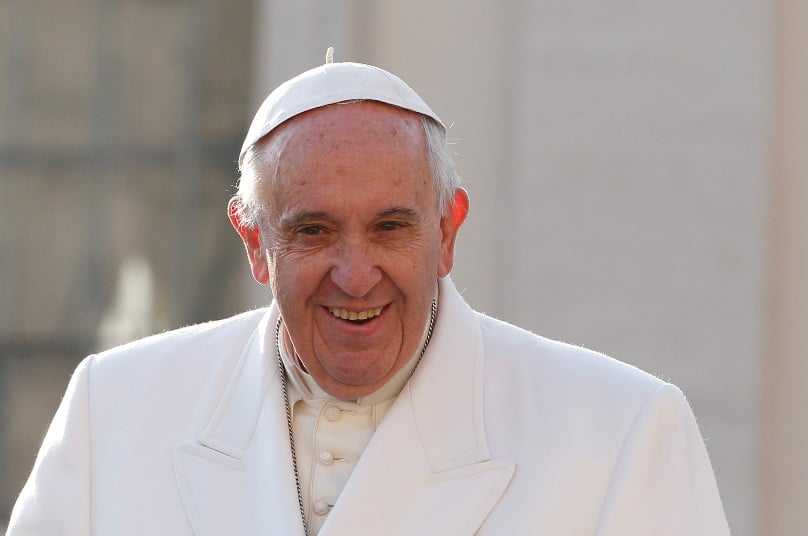
Dear Father, I read recently that Pope Francis has written to a bishop about some apparitions of Our Lady known as Our Lady of Mercy. What do we know about these apparitions?
Pope Francis has placed the Extraordinary Jubilee Year of Mercy under the protection of Our Lady of Mercy, who is venerated under that title in Savona, Italy.
On 10 May, 2015, the pope wrote to the bishop of Savona-Noli to this effect, speaking of “the cascade of grace from heaven” at the shrine of Our Lady of Mercy in Savona.
“The Mother of Mercy is always close and helps all her children who are in danger”, he wrote.
The devotion in Savona owes its origin to the apparitions there in 1536 to Blessed Antonio Botta, a farmer born in 1471. He was a pious man, who always prayed the Rosary as he went to work.
On Saturday, 18 March, 1536, as he was on his knees washing his hands in a little stream, he saw a great light come down from heaven and he heard a voice say: “Rise up and do not doubt – I am the Virgin Mary.”
He described Our Lady as being dressed in white and surrounded by a dazzling light. She was standing on a large rock overlooking the stream in the valley of the river Letimbro.
Our Lady told him to ask his confessor to announce in the church that the people should fast on the next three Saturdays and make processions in honour of God and his Blessed Mother.
She also asked Antonio to go to confession and Communion and to return to the same place on the fourth Saturday to receive another message. Antonio immediately went to tell the parish priest, Mons Bartholomew Zabreri, who in turn passed the news on to the bishop.
Although they were receptive to what Antonio had told them, because they knew his sincerity and humility, the mayor, Genoese Doria, was not.
Doria asked Antonio to go to him that night, where he questioned him about what he had seen. Soon the whole town learnt what had happened and they took the message to heart.
On Saturday, 8 April, the day before Palm Sunday, Antonio returned to the place of the apparition and got down on his knees to pray.
Again he saw a bright light, even brighter than the first time, which came down and rested on a rock in the river. He saw in the light the figure of a lady dressed in white with a gold crown on her head.
This time, Antonio said, she stood with her arms extending downwards in a gesture of mercy.
Again she asked him for the three Saturdays of fasting and the processions and for the people to give up their evil ways, or their life would be shortened.
When Antonio asked Our Lady for a sign so that the people would believe him she answered that he didn’t need one and that she would inspire the people as to what they should do. Then she raised her hands and eyes to heaven, as if in prayer to God, saying “Mercy and not justice”, and disappeared.
A strong fragrance remained in the place for some time afterwards. Antonio went immediately to tell the people of Savona this second and last message from the Blessed Virgin.
Since then Our Lady has been venerated in Savona as Mother of Mercy.
News of the apparitions spread quickly and soon large numbers of people were making pilgrimages to the site. A committee was organised to co-ordinate the influx of pilgrims, and the large sums of money they gave were used to build a shrine.
On 21 April the bishop, Bartholomew Chiabrers, authorised the building of a chapel. The project was also approved by the municipal council and by Cardinal Spinola Horace on 24 July.
The construction of a new church began on 11 August that year. Four years later the local community declared 18 March to be observed as a yearly festival with a procession to the shrine.
From 1809-12 Pope Pius VII was imprisoned in Savona by order of Napoleon, and he declared that if he were freed he would place a crown on the statue of Our Lady of Mercy.
This he did on 10 May, 1815. Now, exactly 200 years later, Pope Francis has written to the bishop of Savona entrusting the Jubilee Year to Our Lady of Mercy.
We do well, as Pope Francis has done, to entrust our efforts in the Year of Mercy to Our Lady, Mother of Mercy, knowing that she will always hear and answer us.
